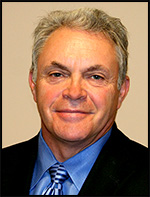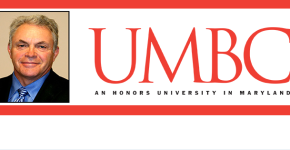 The western region of the US has been experiencing a rash of wildfires.
The western region of the US has been experiencing a rash of wildfires.
John Rennie Short, professor of public policy at the University of Maryland Baltimore County, explains how people living in at-risk areas and the west getting drier is not a good combination.
Education
Ph.D., University of Bristol
M.A., Geography, University of Aberdeen
Research Interests
Urban issues, environmental concerns and cartographic representation
Recent Publications
“City Marketing,” International Encyclopedia of the Social & Behavioral Sciences (February 2015, Elsevier),
Human Geography: A Short Introduction. Oxford University Press (2014).
Stress Testing The USA: Public Policy and Reaction to Disaster Events. Palgrave Macmillan (2013).
Cities and Nature 2nd ed. revised and enlarged, with Lisa Benton-Short. Routledge (2012).
Globalization, Modernity and the City. Routledge (2012)
Experience and Honors
- Professor and Chair, Geography and Environmental Systems, UMBC
- Professor of Geography, Maxwell School of Public Affairs and Citizenship, Syracuse University
- Helen and John S. Best Fellowship. American Geographical Society Library, University
- of Wisconsin, Milwaukee
- The Leverhulme Visiting Professorship to UK, Loughborough University
- Alexander O. Vietor Fellowship in Cartography, Beinecke Rare Book and Manuscript, Library, Yale University
Western Wildfires

We are on record to have another devastating fire season in the western states of the USA. More than 8 million acres are now burning each year.
There are two main reasons behind the growing number of fires. Fire suppression policies that snuff out fires as they appear, which leads to the build up of fuel that is the raw material for larger, more devastating fires, and climate change that is making the west hotter, drier and more vulnerable to fire.
But other forces are at work, often ignored in the popular national media.
The first is the enlargement of what is known as the Wildland-Urban interface (WUI), the area of private land on the edges of national and state forests. Since 1970 there has been a 50 percent increase in the low-density housing that borders state and federal wildlands.
States and local municipalities encourage the process because it boosts the local tax base and generates increased income and new jobs.
So we have more people moving into areas subject to greater risk of fire. But the federal government picks up between one half and two thirds of the cost of protecting people and property in the WUI. In effect the federal government, the US taxpayer, picks up the tab to subsidize the property of a wealthy minority living in this area.
Protecting people and property in the WUI has become so expensive it has shifted the priorities of the US Forest Service. In 1990 firefighting accounted for only 13 percent of the Forest Service budget, now it eats up more than half, delaying much needed investment in thinning trees and making forest less resistant to megafires.
The research clearly shows that as the WUI expands and the west gets drier, we are in for more dangerous and costly fire seasons in the years ahead.

Comments
One response to “John Rennie Short, University of Maryland Baltimore County – Western Wildfires”